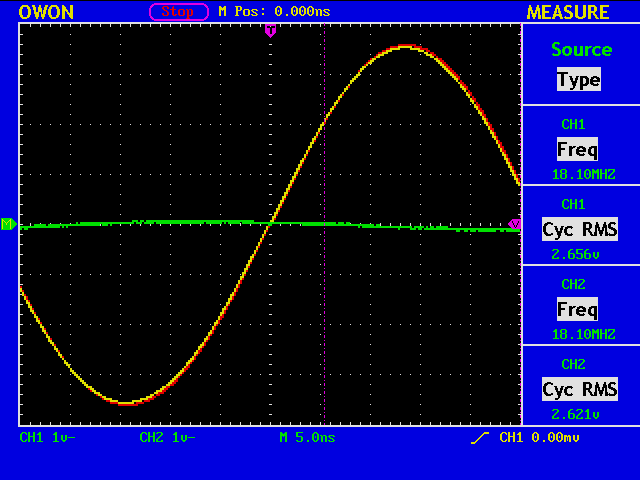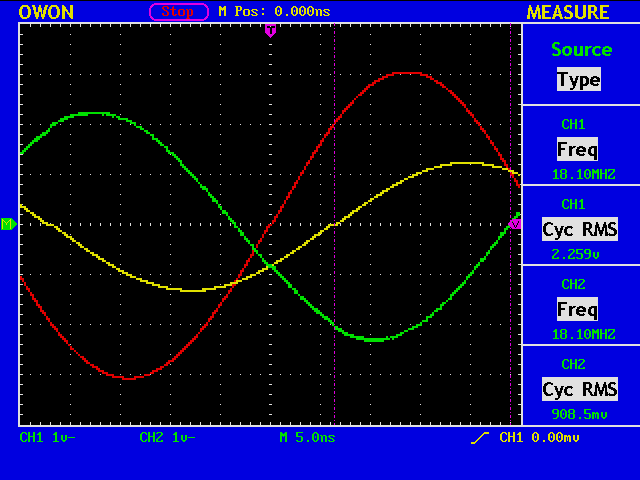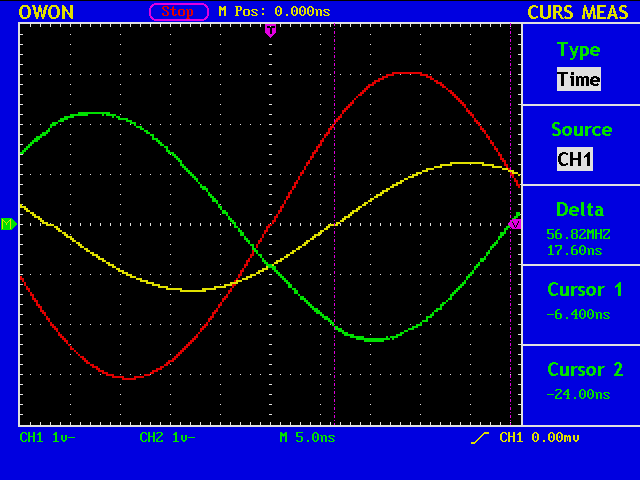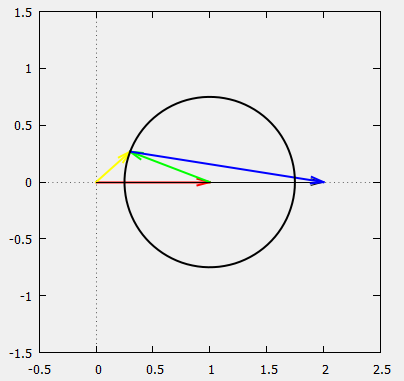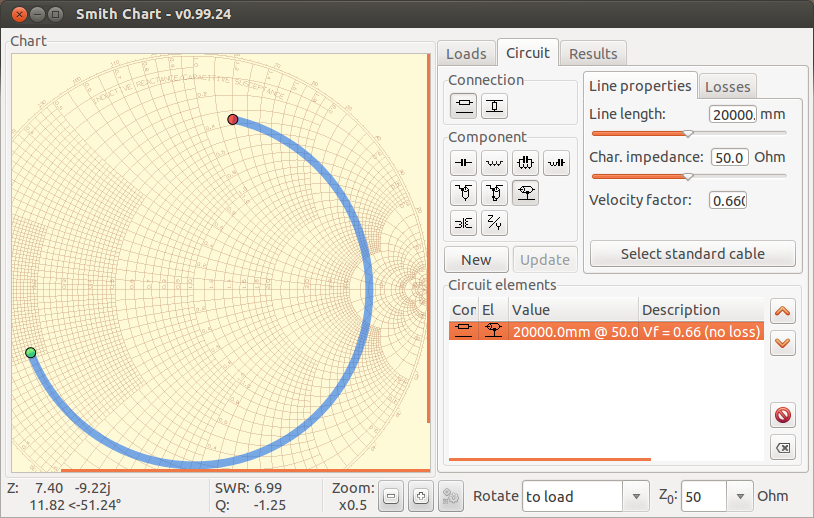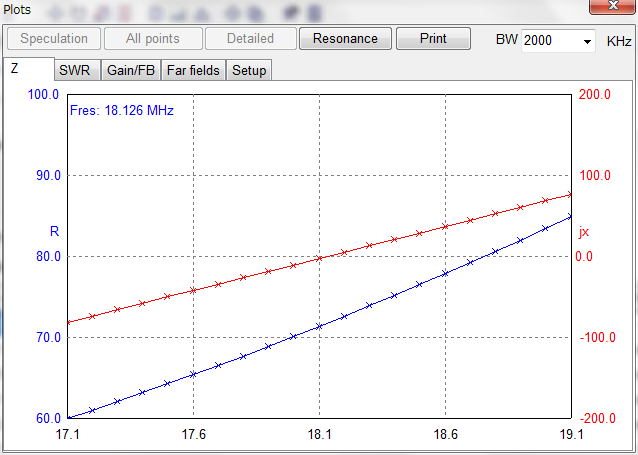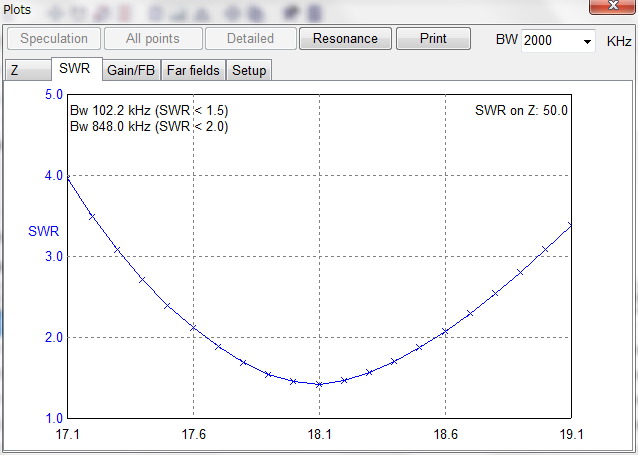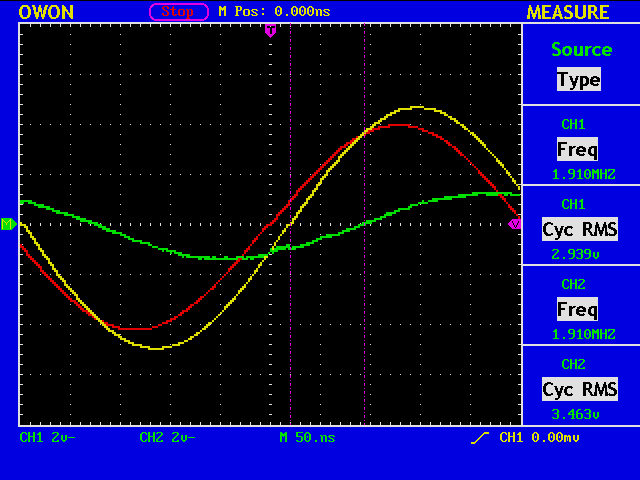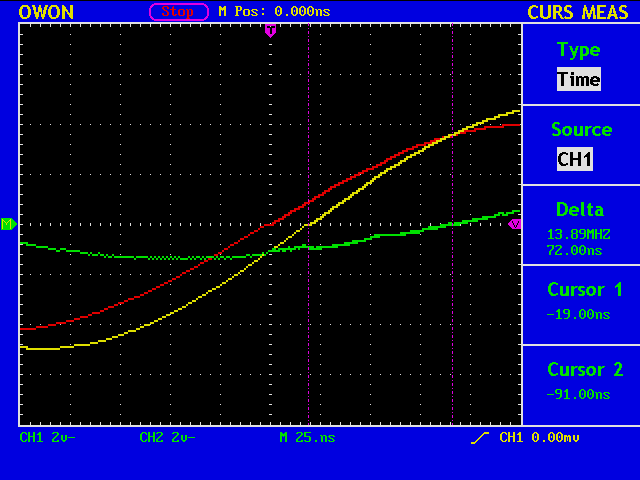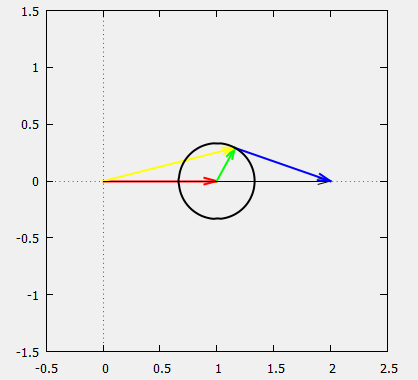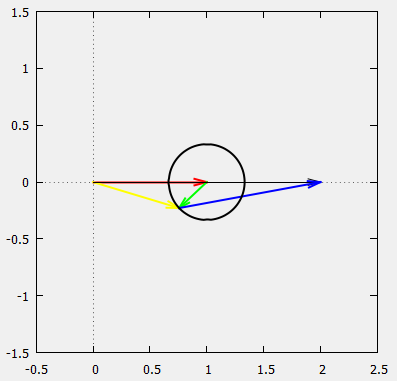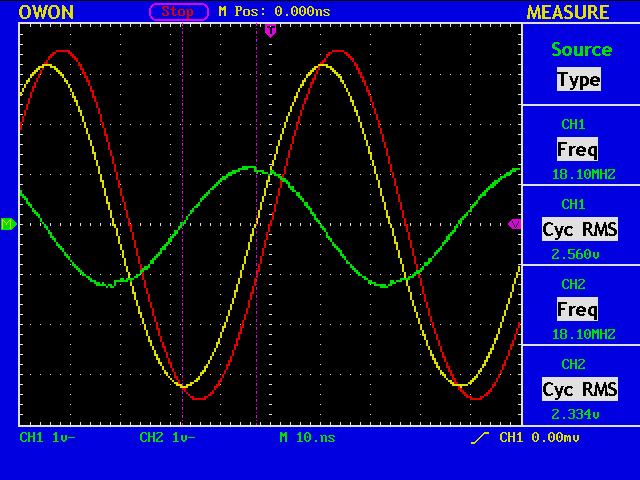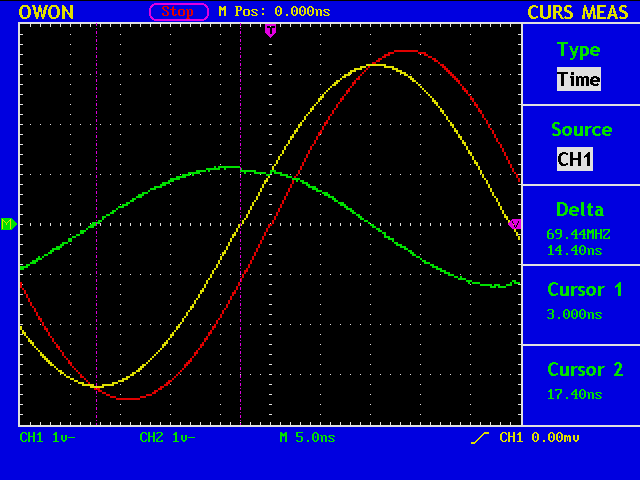First, with a dummy load. This seems to be quite reasonable. Almost no reflection (green), and V1 (red) and V2 (yellow) are almost the same.
Then, my 17m band full-size dipole, which is far from satisfactory.
The voltage ratio V2/V1=0.9085/2.259=0.402, and the delay of V2 against V1 is 41.7deg (=360deg*6.40nS/55.2nS).
The magnitude of the reflection coefficient is 0.749, which corresponds to the VSWR of 6.98.
(%i) V1:1.0+%i*0.0; (%i) t:2.0*3.1416*(-41.7/360.0); (%i) V2:0.402*(cos(t)+%i*sin(t)); (%i) Vr:2*V1-V2; (%i) z:50.0*V2/Vr; (%i) realpart(z); (%o) 7.407809291003613 (%i) imagpart(z); (%o) -9.031478001791401 (%i) abs(z); (%o) 11.68089180622445 (%i) g:(z-50)/(z+50); (%i) abs(g); (%o) 0.74920478622757 (%i) SWR:(1+abs(g))/(1-abs(g)); (%o) 6.974633845344225
The cable length is, if I remember correctly, around 20m, so the antenna impedance should be 17.8+i59.4 ohm, but this is not very likely from the simulation below.

